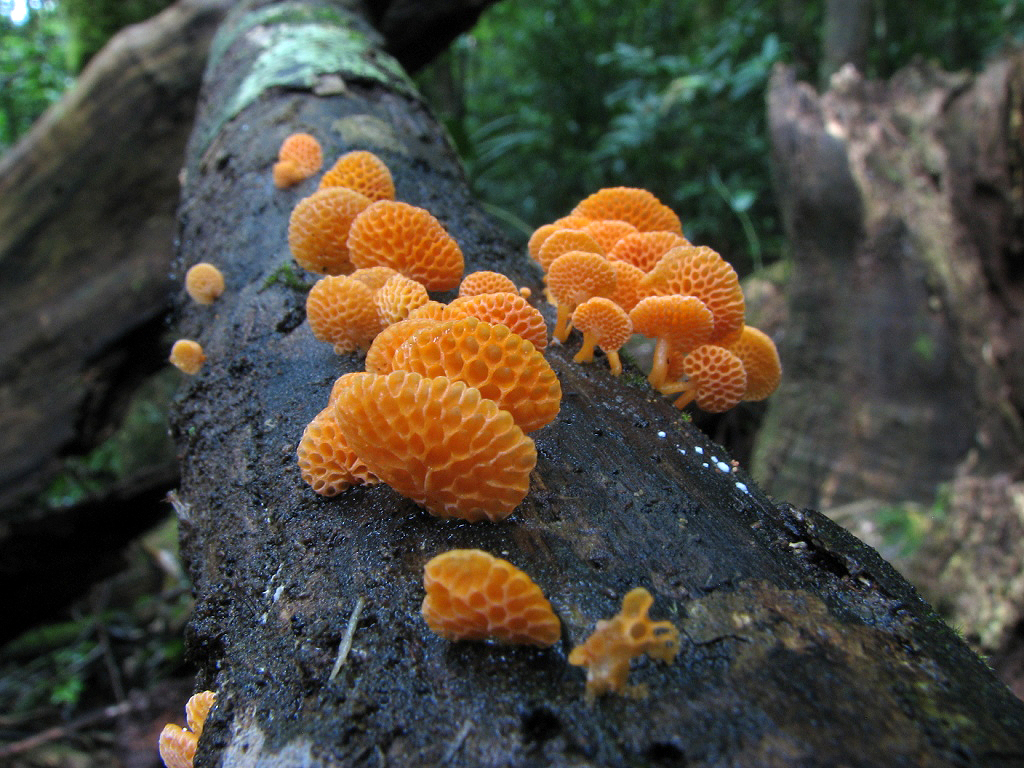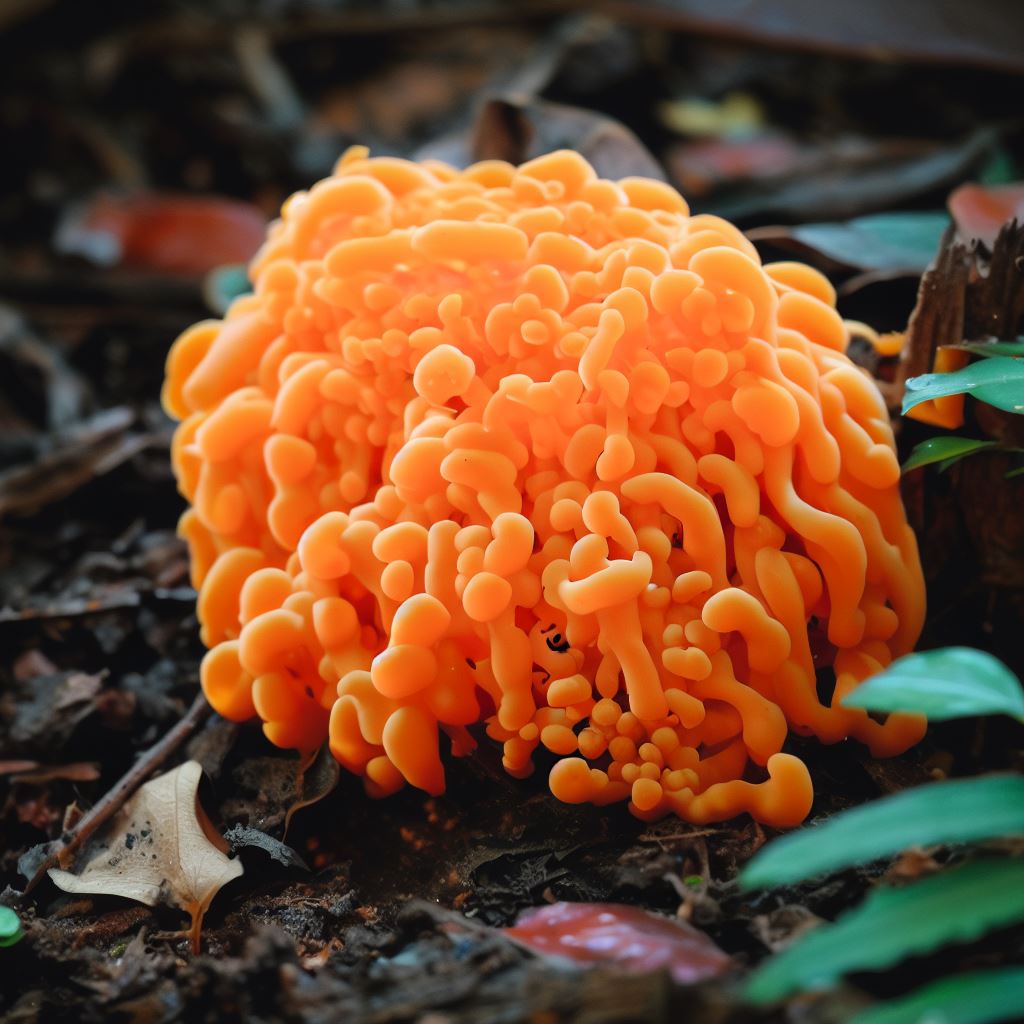What Is Orange Fungus on Wood? How to Identify and Get Rid of It for Good

Have you noticed orange fungus growing on wood surfaces in your home or yard? This unsightly problem can cause serious damage to the wood and may even pose health risks if left untreated. Orange fungus, also known as orange mold or slime mold, often appears in damp, shaded areas where moisture accumulates. It can thrive on wood furniture, decks, fences, or even inside your home on structural wood. In this guide, we’ll explore what causes orange fungus to grow on wood, how to identify it, and most importantly, how to get rid of it for good. If you’re dealing with mold issues in your home, Citywide Mold Mitigation offers expert mold removal services to help restore your property.
What Causes Orange Fungus to Grow on Wood?
Orange fungus thrives in areas where moisture and organic material are abundant. Wood, being a natural material, provides the perfect environment for fungal growth when it’s exposed to water or high humidity levels. Here are the most common causes of orange fungus on wood:
1. Moisture and Poor Ventilation
Fungus, including orange mold, requires moisture to grow. Areas with poor ventilation and high humidity, such as basements, crawl spaces, and outdoor decks, are prime spots for fungus to thrive on wood. Leaky pipes, water damage, or even prolonged rain exposure can lead to fungal growth.
2. Shaded or Damp Areas
Fungus is more likely to grow in shaded areas where the sun can’t dry out the wood. Outdoor wooden structures like decks or fences that are in constant shade and dampness may develop orange fungus over time. Wood piles, garden fences, and furniture stored outside are also at risk.
3. Decaying Organic Matter
Orange fungus often grows on rotting wood or areas where organic debris like leaves or mulch accumulate. As the wood or organic matter begins to decay, it creates a nutrient-rich environment that attracts mold and fungus. Fungus can also develop in soil and spread to nearby wood structures.
If you want to learn more about what causes mold to grow on wood, check out this wood rotting guide by The Wood Database.
How to Identify Orange Fungus on Wood

Orange fungus, or orange slime mold, has distinct characteristics that make it easy to identify. It often appears as a slimy, bright orange or rust-colored patch on wood surfaces. The fungus can range in texture from slimy to dry and powdery, depending on the environment and stage of growth. Here’s how to recognize it:
1. Slimy Appearance
At its early stages, orange fungus often appears as a wet, slimy, and bright orange or yellowish substance. It may look like a spongy or gelatinous mass, especially if it has recently been exposed to moisture.
2. Dry, Powdery Texture
As the fungus matures, it dries out and becomes powdery or crusty in texture. The color may fade from bright orange to a dull brown or rust color as it dries. You might notice powdery spores around the affected wood, which can spread the fungus further if not addressed.
3. Spread Across Wood Surfaces
Orange fungus can spread rapidly across wood surfaces, covering large areas if not treated. It may begin in small patches but can quickly spread to cover entire sections of wood, especially in moist environments.
Is Orange Fungus Dangerous?
Orange fungus on wood can be harmful to both the wood structure and your health. While not all types of orange fungus are toxic, some species may release harmful spores that cause respiratory issues or allergic reactions when inhaled. Additionally, the presence of orange mold can indicate wood rot, which can weaken the structural integrity of your wooden surfaces or furniture. Here’s why you shouldn’t ignore orange fungus:
1. Structural Damage to Wood
Orange fungus often grows on wood that is already rotting or decaying. As the fungus continues to grow, it accelerates the decay process, leading to weakened or crumbling wood. If left untreated, this can cause serious damage to wooden structures like decks, fences, and even the wooden framing of your home.
2. Health Risks
While orange fungus itself is not always toxic, it can release spores that contribute to poor indoor air quality. Individuals with allergies, asthma, or weakened immune systems may be more sensitive to these spores, experiencing respiratory symptoms, coughing, or eye irritation. It’s best to remove orange mold promptly to reduce health risks.
How to Get Rid of Orange Fungus on Wood

Getting rid of orange fungus on wood requires proper cleaning, drying, and sometimes even replacing damaged sections of wood. Follow these steps to eliminate the fungus and prevent it from returning:
| Step | What to Do |
|---|---|
| 1. Clean the Affected Area | Start by scrubbing the affected area with a brush and a solution of warm water and mild detergent. This will help remove surface mold and dirt. For more stubborn mold, use a mixture of water and white vinegar to break down the mold’s structure. |
| 2. Apply a Fungicide or Mold Remover | Once the surface mold is removed, apply a fungicide or commercial mold remover to the wood. This will kill any remaining mold spores and prevent the fungus from regrowing. Be sure to follow the instructions on the product label for safe use. |
| 3. Dry the Area Thoroughly | It’s essential to dry the wood completely after cleaning to prevent mold from returning. Use fans, a dehumidifier, or natural sunlight to dry out the area. Moisture is the primary cause of mold, so eliminating dampness is key to keeping your wood mold-free. |
| 4. Sand and Seal the Wood (If Necessary) | If the fungus has caused damage to the wood surface, you may need to sand down the affected area to remove any remaining mold or damage. Afterward, apply a wood sealer to protect the surface from future moisture and fungal growth. |
If the orange fungus has caused extensive damage to the wood, consider replacing the affected sections to ensure the structural integrity of your home or furniture. Citywide Mold Mitigation can provide expert mold remediation services to help restore your property.
How to Prevent Orange Fungus from Growing on Wood
Once you’ve cleaned the orange fungus from your wood, it’s important to take steps to prevent it from returning. Here’s how to keep your wood fungus-free:
1. Control Moisture Levels
Moisture control is the most effective way to prevent fungal growth on wood. Ensure that your home is properly ventilated, especially in areas prone to dampness like basements, attics, and crawl spaces. Use dehumidifiers in humid areas, and repair any leaks or water damage promptly.
2. Use Mold-Resistant Paint or Sealant
Applying a mold-resistant paint or wood sealant can help protect outdoor wooden structures from moisture and fungal growth. These products create a protective barrier that prevents water from penetrating the wood, making it less susceptible to mold and fungus.
3. Keep Outdoor Wood Clean and Dry
Outdoor furniture, decks, and fences are especially prone to mold and fungus due to their exposure to the elements. Regularly clean and dry these surfaces to remove any dirt, debris, or moisture that can encourage fungal growth. Consider storing wooden furniture indoors during the wet season to prevent damage.
FAQ
| Question | Answer |
|---|---|
| Is orange fungus on wood dangerous? | While not all orange fungus is toxic, it can release spores that affect indoor air quality and cause respiratory problems. It can also weaken wood, leading to structural damage. |
| Can I use bleach to clean orange fungus from wood? | Bleach can kill mold on non-porous surfaces, but it may not penetrate deeply enough into wood. White vinegar or commercial fungicides are more effective for treating mold on porous surfaces like wood. |
| How can I prevent orange fungus from growing on my outdoor deck? | To prevent orange fungus, keep your deck clean and dry, apply a mold-resistant wood sealant, and ensure proper drainage to avoid standing water. |
| What should I do if the fungus has caused wood rot? | If the fungus has caused significant wood rot, it may be necessary to replace the affected sections of wood. Contact a professional for mold remediation and repairs. |
| How do I know if orange fungus is growing inside my home? | Signs of orange fungus inside your home include a musty odor, visible patches of mold, and signs of wood rot. If you notice any of these signs, take action to remove the mold promptly. |
If you need help with mold or fungus in your home, contact Citywide Mold Mitigation for professional mold removal and wood restoration services.

